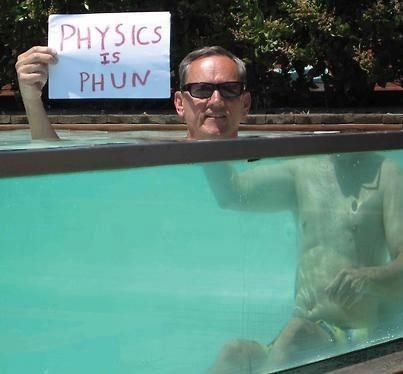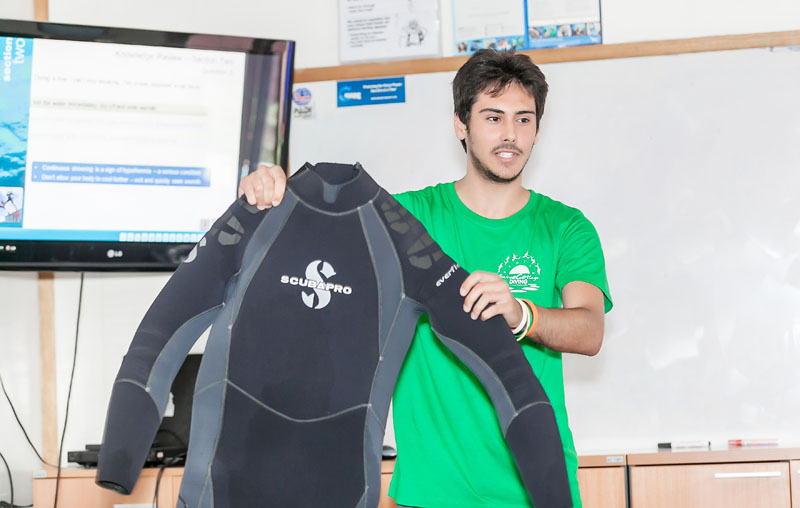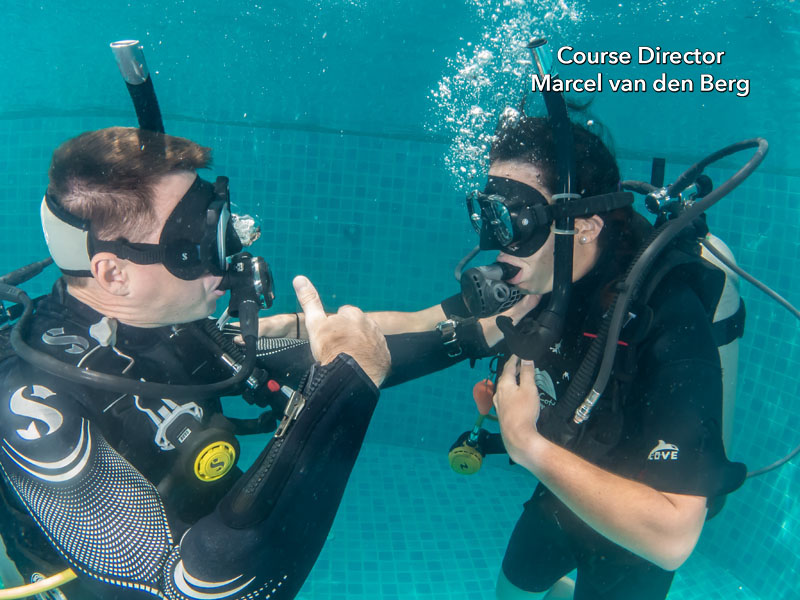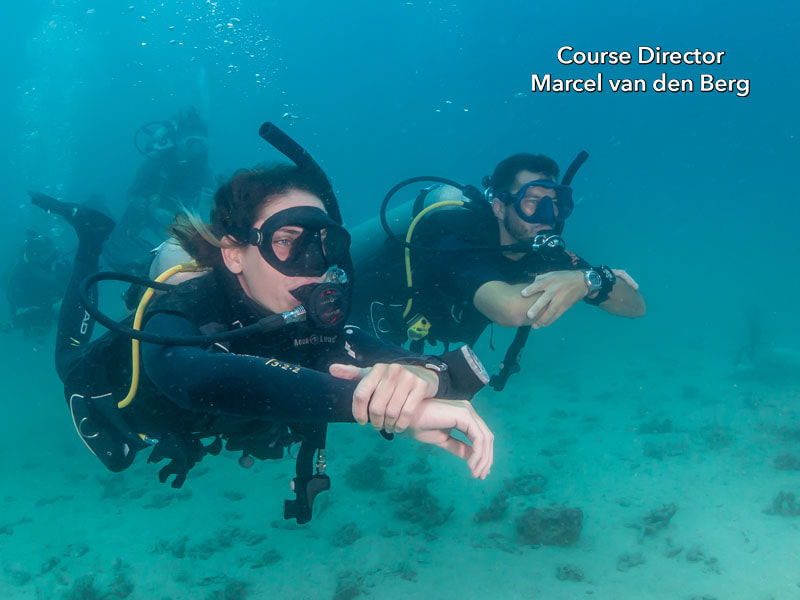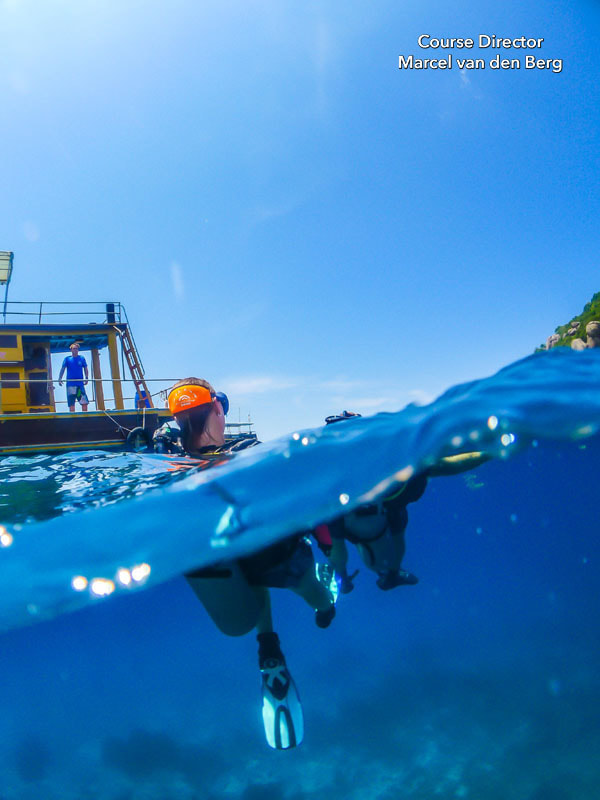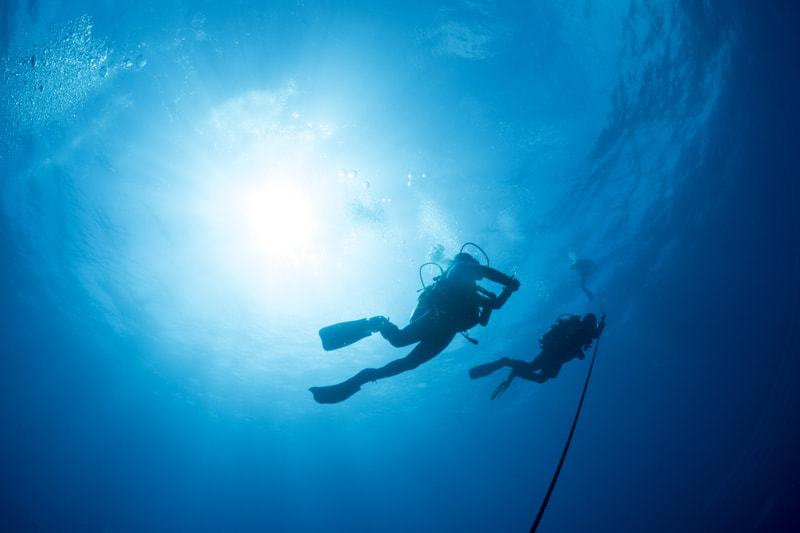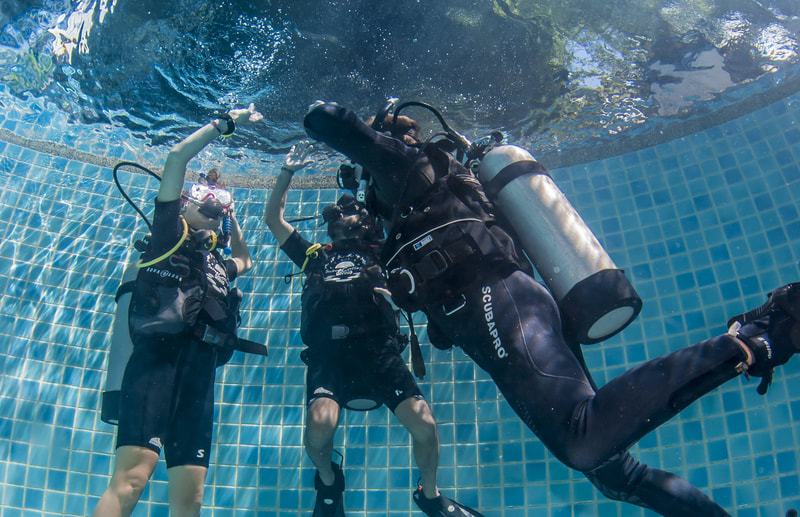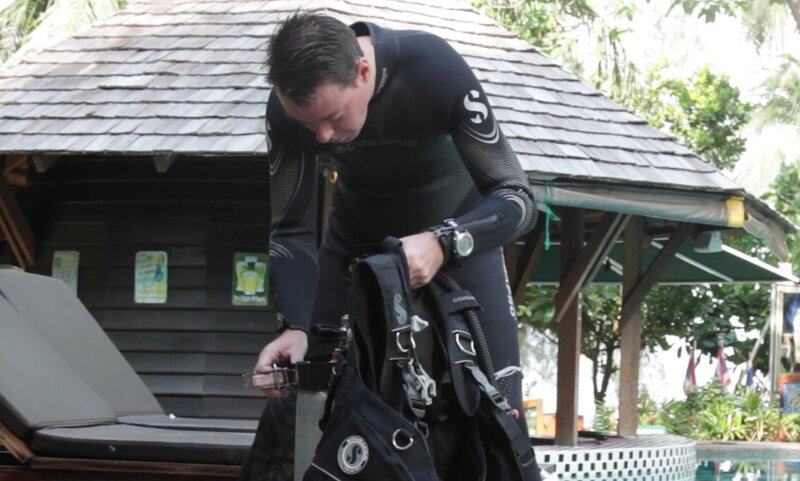PADI Open Water Diver Manual Answers Chapter 2 - Knowledge Review
PADI Open Water Diver Manual Answers Chapter 2 explained in detail to help you prepare for the course and understand the PADI Open Water Knowledge Review 2 Answers.
In PADI Open Water Diver Manual Answers Chapter 2 we focus on more general scuba diving tips for beginners. In chapter 2 we cover refraction, temperature, the buddy system, and more air consumption theory.
After understanding the PADI Open Water Knowledge Review 2 Answers you are another step closer to your scuba diving certification.
After understanding the PADI Open Water Knowledge Review 2 Answers you are another step closer to your scuba diving certification.
Question 1 - PADI Open Water Diver Manual Answers Chapter 2
Question 1: What happens to color underwater?
Water absorbs color and red is the first color that gets affected by this. This doesn’t mean that you won’t see a beautiful colorful reef on your dives, but it might be a bit less colorful than when you snorkel in shallow water or have seen on documentaries( as they use underwater lights).
Water absorbs color and red is the first color that gets affected by this. This doesn’t mean that you won’t see a beautiful colorful reef on your dives, but it might be a bit less colorful than when you snorkel in shallow water or have seen on documentaries( as they use underwater lights).
Objects also appear larger and closer to you underwater. This has to do with light traveling through different mediums like water and air and vice versa. We call this refraction. For this reason, you might think that a fish is big during the dive, but in reality, it is a bit smaller.
Question 2 - PADI Open Water Diver Manual Answers Chapter 2
Question 2: Why should you move slowly underwater?
It is harder to move through water than through air as water is denser than air. For this reason, we can get overexerted much quicker while scuba diving. To prevent this we want to make sure that we swim in a horizontal position(trim).
It is harder to move through water than through air as water is denser than air. For this reason, we can get overexerted much quicker while scuba diving. To prevent this we want to make sure that we swim in a horizontal position(trim).
We also want to make sure that we are streamlined by attaching our dive equipment as close as possible to our body and keep our arms locked together or next to our body. We only use our legs to swim, so try not to use your arms when scuba diving.
On top of that, it is important to always swim slowly and steadily while scuba diving to conserve energy and air. The slower you move the more things you can see, and you will love your dives a lot more.
On top of that, it is important to always swim slowly and steadily while scuba diving to conserve energy and air. The slower you move the more things you can see, and you will love your dives a lot more.
Question 3 - PADI Open Water Knowledge Review 2 Answers
Question 3: What to do when you get cold while scuba diving?
In water, we lose heat a lot faster than in air. While on land a temperature of 24 degrees Celsius is pleasant, you will find out that scuba diving in 24 degrees gets cold quickly.
You can prevent getting cold underwater by wearing a wetsuit or drysuit. The thickness depends on the temperature of the water and your tolerance level.
In water, we lose heat a lot faster than in air. While on land a temperature of 24 degrees Celsius is pleasant, you will find out that scuba diving in 24 degrees gets cold quickly.
You can prevent getting cold underwater by wearing a wetsuit or drysuit. The thickness depends on the temperature of the water and your tolerance level.
If you do get cold and start shivering underwater then signal your buddy, slowly ascent, and exit the water immediately to prevent hypothermia.
Question 4 - PADI Open Water Diver Manual Answers Chapter 2
Question 4: What should you do when you get overexerted underwater?
Like we discussed in the PADI Open Water Diver Manual Answers Chapter 1 you can get quickly overexerted in water when you move too much.
This is because water is much denser than air and we are under pressure. It is very important to take slow deep breaths in and out to prevent a build-up of carbon dioxide.
Like we discussed in the PADI Open Water Diver Manual Answers Chapter 1 you can get quickly overexerted in water when you move too much.
This is because water is much denser than air and we are under pressure. It is very important to take slow deep breaths in and out to prevent a build-up of carbon dioxide.
If you did move too much and you feel that you can’t get enough air you should stop all activity, signal your buddy, and rest. The good news is that when you rest you will recover quickly and in most cases, you can continue the dive. Try to avoid sting currents unless you have completed a drift diving course.
Question 5 - PADI Open Water Diver Manual Answers Chapter 2
Question 5: What to do when you get separated from your buddy?
It is important to stay close to your buddy at all times. In the unlikely event you might get separated you can search for your buddy for no more than a minute. If you can’t find your buddy you should slowly surface and reunite.
It is important to stay close to your buddy at all times. In the unlikely event you might get separated you can search for your buddy for no more than a minute. If you can’t find your buddy you should slowly surface and reunite.
Question 6 - PADI Open Water Knowledge Review 2 Answers
Question 6: Why is a buddy system important while scuba diving?
Buddy separation can occur because of various reasons. The most common reasons are: One buddy swims too fast without checking enough, using underwater cameras, chasing fish, or getting caught in currents.
Buddy separation can occur because of various reasons. The most common reasons are: One buddy swims too fast without checking enough, using underwater cameras, chasing fish, or getting caught in currents.
Even if you dive with a buddy that doesn’t pay enough attention, it is still your responsibility to stay close to your buddy and remind them to stay close. Try and get the hang of asking if your buddy is ok every few minutes, check each other's air regularly and keep a close eye on each other at all times.
Question 7 - PADI Open Water Diver Manual Answers Chapter 2
Question 7: How to plan your dive based on air consumption?
You should use the rule of thirds
You should use the rule of thirds
Question 8 - PADI Open Water Diver Manual Answers Chapter 2
Question 8: What should you do when your fin strap gets loose while swimming on the surface?
Keeping your regulator in and mask on your face helps to prevent water from entering your airways in choppy waves.
Keeping your regulator in and mask on your face helps to prevent water from entering your airways in choppy waves.
It is important to make sure you are positively buoyant by fully inflating your BCD. This helps you to stay on the surface as it is hard to swim with only one fin. Make sure you signal your buddy for assistance and ask them to help you to swim back to the boat or shore or fix the strap on the surface if it is possible.
Question 9 - PADI Open Water Knowledge Review 2 Answers
Question 9: What are the steps for the 5 point descent?
Before your descent, you can use the acronym: SORTED to prepare for your 5 Point Decent. Here are the steps for the 5 point descent:
- S - Signal OK to go down
- O - Orientate
- R - Switch snorkel to your regulator
- T - Check your computer and the time
- E&D - Equilize and Descent
Question 10 - PADI Open Water Diver Manual Answers Chapter 2
Question 10: What happens to your wetsuit when you descent?
Your wetsuit is made of neoprene rubber. When you decent we increase the surrounding pressure which makes your wetsuit thinner. This will result in loss of buoyancy and you might start descending too fast.
You can add small bits of air into your BCD frequently to counter to control your speed and buoyancy.
Your wetsuit is made of neoprene rubber. When you decent we increase the surrounding pressure which makes your wetsuit thinner. This will result in loss of buoyancy and you might start descending too fast.
You can add small bits of air into your BCD frequently to counter to control your speed and buoyancy.
Question 11 - PADI Open Water Diver Manual Answers Chapter 2
Question 11: Ascending or Descending while using a reference line.
During your PADI Open Water Diver course, you will learn how to descend and ascend without a visual reference in case a reference is not available. However, we always recommend you to descend and ascend with a visual reference for orientation.
During your PADI Open Water Diver course, you will learn how to descend and ascend without a visual reference in case a reference is not available. However, we always recommend you to descend and ascend with a visual reference for orientation.
Even better will be a decent or ascent line that you can hold onto if needed. Holding onto a reference line can help you control your speed, makes it easier to equalize your ears, and is great for when you feel any anxiety as it helps in calming you down.
Question 12 - PADI Open Water Knowledge Review 2 Answers
Question 12: How to perform a proper ascent?
It is important to always ascent as slow as possible and never faster than 18m/60 ft per minute to prevent decompression sickness. You will learn more about decompression sickness in the PADI Open Water Diver Manual Answers Chapter 4.
It is important to always ascent as slow as possible and never faster than 18m/60 ft per minute to prevent decompression sickness. You will learn more about decompression sickness in the PADI Open Water Diver Manual Answers Chapter 4.
We always want to make a safety stop after every dive at 5 meters for 3 minutes to reduce nitrogen levels.
You should also deflate your BCD on the ascent to prevent air from expanding in your BCD, which can lead to an uncontrolled and fast ascent. Just use your legs and fins to swim up to the surface. This way it is much easier to control your ascent.
You should also deflate your BCD on the ascent to prevent air from expanding in your BCD, which can lead to an uncontrolled and fast ascent. Just use your legs and fins to swim up to the surface. This way it is much easier to control your ascent.
Question 13 - PADI Open Water Diver Manual Answers Chapter 2
Question 13: Why is it important to inflate your BCD at the surface?
A lot of (beginner) divers are very excited when reaching the surface after seeing so many beautiful things underwater. It is common for them to forget to inflate their BCD at the surface which can cause problems as it is hard to stay afloat with their weight system.
A lot of (beginner) divers are very excited when reaching the surface after seeing so many beautiful things underwater. It is common for them to forget to inflate their BCD at the surface which can cause problems as it is hard to stay afloat with their weight system.
It is therefore very important to keep your mask and regulator in when reaching the surface and first fully inflate the BCD. Once the BCD is fully inflated you can switch from your regulator to your snorkel and signal the Divemaster or Instructor on the boat that you are ok.
Learn more about the PADI IDC Course and how you can become a diving instructor.
Learn more about the PADI IDC Course and how you can become a diving instructor.
Question 14 - PADI Open Water Diver Manual Answers Chapter 2
Question 14: What types of exposure suits can you choose?
You can wear a rash guard, wetsuit, or drysuit depending on the temperature of the water. Your Diving Instructor can help you select the right one.
You can wear a rash guard, wetsuit, or drysuit depending on the temperature of the water. Your Diving Instructor can help you select the right one.
Question 15 - PADI Open Water Knowledge Review 2 Answers
Question 15: Can you get overheated using a wet or dry suit before or after the dive?
Wetsuits and drysuits are fantastic to keep you warm underwater but they can quickly get hot on the surface, especially on a hot day.
Wetsuits and drysuits are fantastic to keep you warm underwater but they can quickly get hot on the surface, especially on a hot day.
We recommend you only wear them just before entering the water and take them off the moment you get back on the boat or land(shore dive) to prevent overheating.
Question 16 - PADI Open Water Diver Manual Answers Chapter 2
Question 16: Where should you wear your cutting tool?
It doesn’t matter where you attach your cutting tool as long as either hand can reach it easily when you need it.
We usually don’t use cutting tools often, but they can be a lifesaver in the unlikely event you get entangled.
It doesn’t matter where you attach your cutting tool as long as either hand can reach it easily when you need it.
We usually don’t use cutting tools often, but they can be a lifesaver in the unlikely event you get entangled.
|
|
|
|
Marcel van den Berg
PADI Platinum Course Director
PADI Platinum Course Director
SCUBA DIVING TIPS
Privacy Policy
Disclaimer
As an Amazon Associate I earn from qualifying purchases.
All content on this website and URL are owned by Sairee Cottage Diving PADI 5-Star IDC Center S-36452
Copyright 2017 - 2022 | All Rights Reserved
Disclaimer
As an Amazon Associate I earn from qualifying purchases.
All content on this website and URL are owned by Sairee Cottage Diving PADI 5-Star IDC Center S-36452
Copyright 2017 - 2022 | All Rights Reserved


